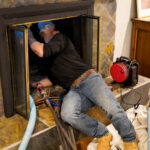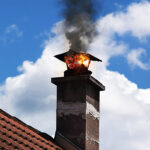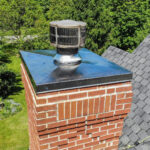Common Causes of Chimney Moisture Damage
The continuous exposure to rain, snow, hail, and other environmental conditions make chimney leaks more common in Indiana than homeowners may realize. Since chimney leaks often lead to moisture damage, it’s critical to make the necessary repairs before it worsens or causes major structural issues. Here are the four common causes of chimney moisture damage.
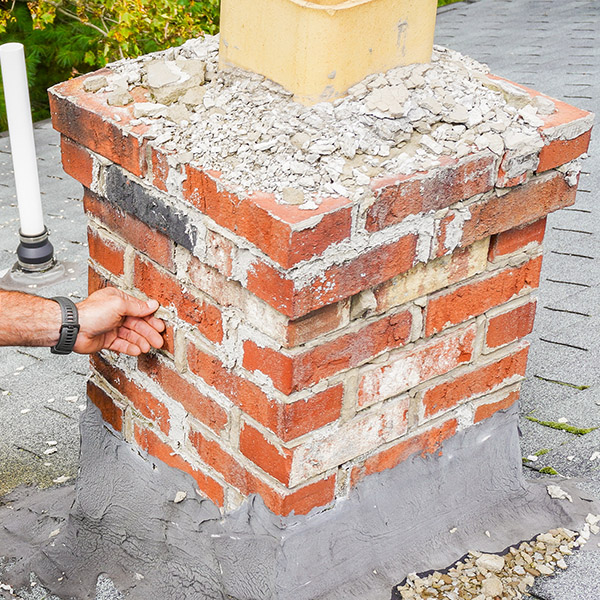 Spalling Bricks
Spalling Bricks
Spalling bricks is one of the most common causes of chimney moisture damage in the Indianapolis area. It is due to the exterior masonry’s constant battle with extreme weather and seasonal temperature changes that can eventually cause moisture damage both inside and outside the chimney. When the porous brick and mortar absorb moisture, it can cause bricks to flake, chip, crumble, or spall. It also causes the mortar, the bonding material that holds the bricks in place, to decay. You may even notice small brick pieces or entire blocks of brick on the ground near the chimney and visible gaps in the mortar joints. These visible and not so visible cracks in the masonry create multiple pathways for additional moisture intrusion that will continue to worsen the damage, increasing the risk of fire and exposure to carbon monoxide gas. Wet and humid conditions also create conditions for mold, mildew, and bacteria to grow in the chimney that can spread to other areas of your home. Finally, spalling bricks can destabilize the chimney leading to a collapse if not correctly repaired.
Broken Chimney Cap
Another common cause of chimney moisture damage is a broken or missing chimney cap. When you look at the top of the chimney, you should see a device covering the exposed flue pipe. It may also have a mesh screen that not only protects against moisture intrusion but helps prevent wildlife and debris from getting inside the chimney while venting smoke and fumes out of the home. Environmental conditions and normal wear and tear can cause the chimney cap to deteriorate over time, causing it to crack, corrode, or rust, exposing your chimney to moisture damage that can lead to early chimney liner replacement and other repairs.
Cracks in the Chimney Crown
The cement surface that tops the entire masonry structure is the chimney crown, another common source of moisture damage. Although it is sloped and may also have a drip edge to deflect water and snow away from the chimney, it is still susceptible to weather-related damage, especially when the chimney cap is missing or damaged. Hail and house settling can also cause cracks in the chimney crown that allow water to leak inside the chimney, weakening the masonry, damaging the liner, and causing the damper to corrode or rust.
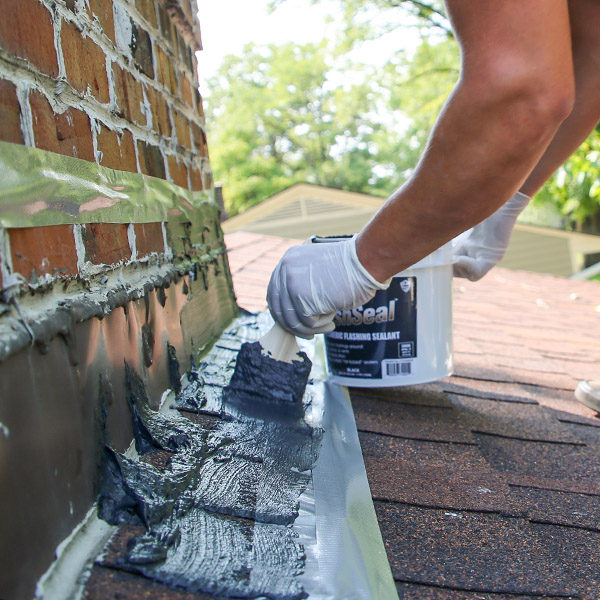 Chimney Flashing Failure
Chimney Flashing Failure
Since water stains on the ceiling or walls near the fireplace can be indications of chimney flashing damage, it is often mistaken for a roof leak. The chimney flashing is the metal piece that creates a water-tight seal between the chimney and roof to prevent moisture damage. Like other sections of the chimney exposed to external weather conditions, it can eventually deteriorate, causing it to warp or corrode. When the flashing is damaged, water will leak inside the chimney where it can cause damage to the attic, roof, and masonry. Chimney flashing should only be repaired or replaced by a certified chimney professional like Chimney Solutions Indiana because improper flashing repair or installation can lead to chimney leaks, a common cause of chimney moisture damage.
Repairing Chimney Moisture Damage
If you suspect your chimney is leaking or has moisture damage, it is imperative to schedule a chimney inspection as soon as possible to prevent further damage. Chimney Saver Solutions provides expert chimney repairs in Shelbyville, Zionsville, and in communities throughout Greater Indy and Marion County, Indiana.
th an expert today at (317) 757-6979.


